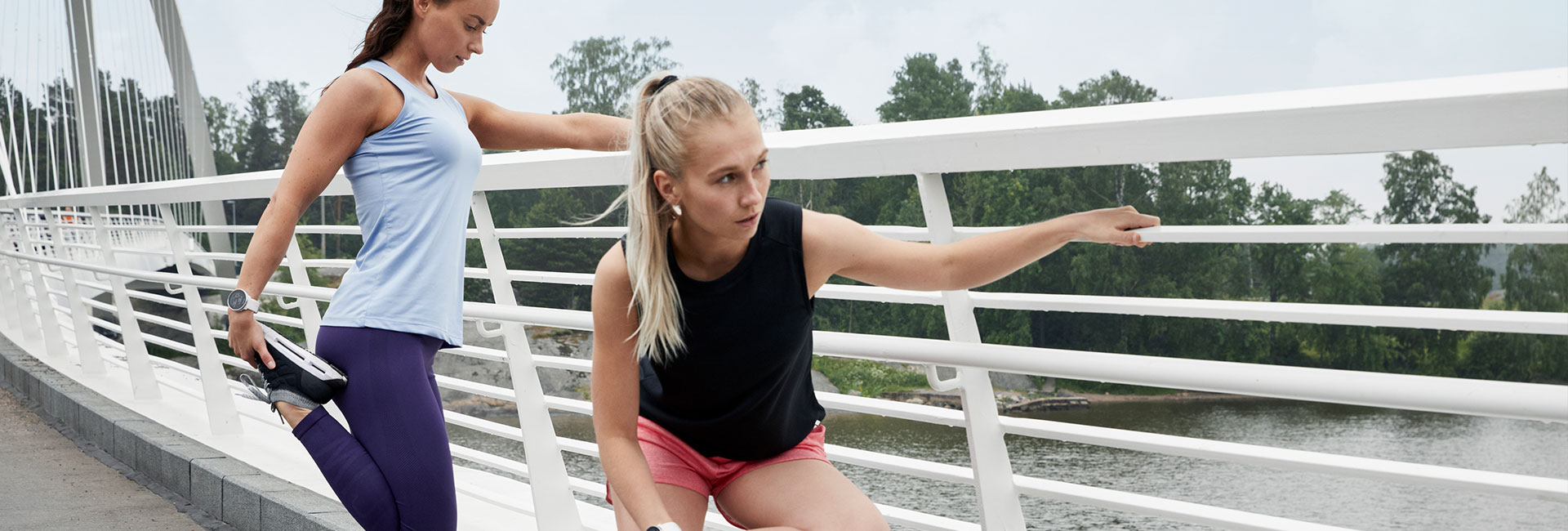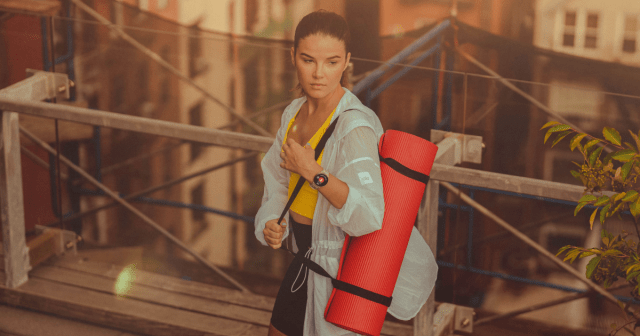Mobility has become a buzzword thrown around in sports and fitness more and more in recent years, but what exactly is mobility training and why is it important?
Here’s some expert insight into mobility training from Dr. Caitlin Glenn Sapp, a USA Triathlon Certified Coach, ACSM Personal Trainer and Doctor of Physical Therapy (DPT). She’s the founder of Crew Racing and Rehab, and, you guessed it, an all-around mobility nerd.
She defines mobility as active movement around a joint, and while about as straightforward as that may seem, she’d be the first to tell you it’s just the tip of the iceberg when it comes to mobility and mobility training.
From what causes mobility issues and the effects of poor mobility, to exercises and stretches to keep you movin’ and groovin’ in the pool, on the bike and at the track, here’s what you need to know about mobility training.
Why Mobility Training Is Essential
The “problem” with many (endurance) sports is that they’re repetitive – and the better and more practiced you are at these linear movements (e.g. swimming, cycling or running), the faster your splits and overall finishing time.
Repetition, repetition, repetition is, of course, necessary if you want to become a better runner, for example, or improve in any specific sport. But, for the human body to stay functional, it was designed to be used in more diverse ways than just traveling through physical space in a straight line.
The repetitiveness of specific sports for weeks, months and even years on end can cause a lack of mobility and a whole host of related issues if not addressed. This applies beyond endurance activities as doing only strength training is monotonous and not enough.
Reasons FOr poor mobility
Poor mobility can be caused by a multitude of different factors, including joint stiffness, tissue length, tissue mobility or if proprioception is impaired.
Proprioception is awareness of where the body is, and when impaired, usually needs a neuromuscular reset.
Often you just need to change the perception of the muscle rather than the length, and this can be done, for example, through a dynamic warm-up.
daily habits that affect mobility
Posture! It’s possible to optimize movement for sport just by changing your posture throughout the day. Practice ways to change your postural perception.
For example, if you find you’re sitting slumped or standing with an excessive curvature of your low back, correct that position to allow a better tolerance to loading the body optimally.
When we learn to move correctly in a static or low load position, such as sitting, standing, or walking we will have greater awareness of where our body should be while we run.
Negative effects of Poor mobility
Impaired mobility can weaken performance in a few ways. If you have a mobility limitation that doesn’t allow full range of motion, you’ll try to compensate by doing different movement patterns and recruiting other muscles and end up overstressing the tissue.
Another way poor mobility can increase risk of injury is by reducing mobility limitations but not stabilizing movement.
Example: Hip
- You’ve had tightness in the front of your hip for a few months.
- You apply techniques to regain mobility and allow a full return of motion into the hip.
- You’re now pain-free and resume normal training, but just because you have hip mobility doesn’t mean the new range of motion is controlled and stable.
- If you don’t learn to control the new motion, getting injured while training becomes more likely.
Benefits of proper mobility
When a tissue is injured, the fibers that make up the structure are no longer aligned in parallel. When this happens, the body is unable to absorb the load that is being applied with training. Smooth, mobile tissue functions optimally and accepts the athlete’s training load. Proper mobility will result in proper movement and less risk of injury.
From a joint’s perspective, when the axis around the joint is able to achieve its full motion, the muscles around the joint work in unison to apply equal forces around the joint. If the joint in unable to achieve its proper mobility, joint health can suffer by changing the axis of the joint.
Quality movement is essential to quality racing and training.
Tweaks to improve mobility
1. Go Play
First: try new (fun) outdoor activities. It’s important to gain stability and dynamic control in all planes whether it’s vertical, side-to-side and linear.
These atypical movements to our sport can act as a supplemental, fun way to work on stability and control.
So, here’s an idea: Go play – a game of frisbee in the park, rollerblading, hiking, etc.
2. Do Yoga
Second: yoga.
Yoga does a great job with gaining body awareness, mobility, and has many mental health benefits.
3. Warm Up
Before running, try a dynamic warm-up: this can include a light jog with form-focused drills, jumps and quick, dynamic stretches.
These dynamic movements change the perception of the muscle rather than the length, causing the individual to feel looser and more prepared to exercise.
Mobility exercises And stretches
1. Banded Ankle Dorsiflexion
While in a lunge position, with band attached behind you, bring the shin over the ankle until you feel resistance. Pulse in and out of resistance. 1-2 sets of 30 pulses.
2. Hip Stretch
Go on one knee, while maintaining an upright position of the torso. Perform a small tilt of the pelvis and extend the hips using your buttocks.
Learn to fold the hips — that is how to activate, strengthen and use the hip flexors.
Check out more dynamic stretches to improve posture, symmetry and range of motion.
3. Foam Rolling
This tissue gliding technique works to lengthen the tissue by realigning the fibers that have undergone injury due to excessive scarring.
You can do this in any area of the body with the same principles — find an area of soreness, apply pressure, move the joint below the muscle back and forth to break up the knots.
4. Twisted Warrior
In a lunge position with one arm on the ground, reach up towards the sky with a straight arm. Focus on rotation the thoracic spine.
5. Thoracic Spine Mobilization
Laying on a foam roller perpendicular to the spine and moving up and down.
Or put the foam roller at the bottom of the thoracic spine, extend backwards while holding for a brief second, then repeat up the spine.
If you liked this post, don’t forget to share so that others can find it, too.
Or give it a thumbs up!
I like this article
Please note that the information provided in the Polar Blog articles cannot replace individual advice from health professionals. Please consult your physician before starting a new fitness program.





